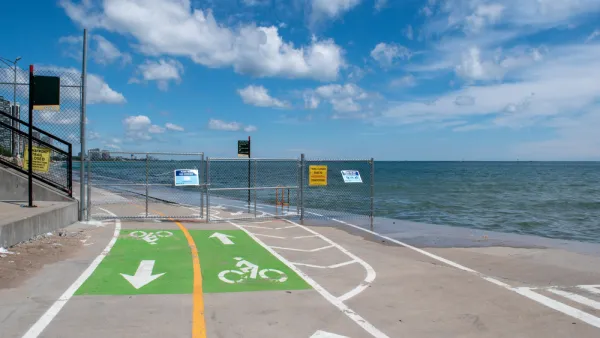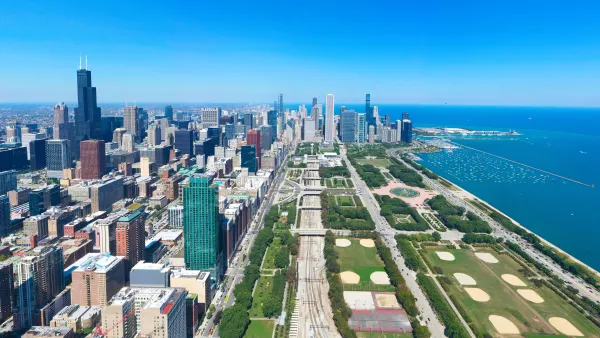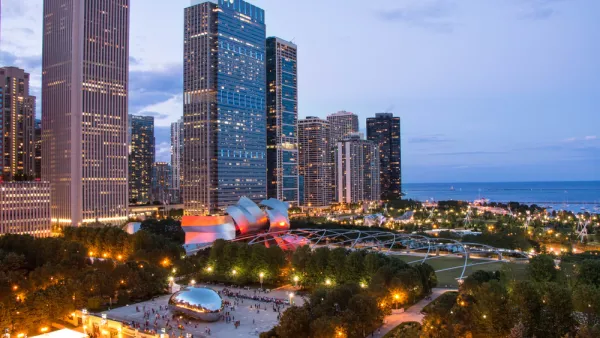Historically stable Lake Michigan has seen its water levels fluctuate dramatically over the last decade, posing increasingly urgent threats to lakeside property and causing severe droughts and flooding.

Although it "stands a half-continent away from the threat of surging ocean levels" and "hugs the shores of one of the grandest expanses of freshwater in the world," writes Dan Egan, Chicago is not immune from threats caused by climate change. Built on a swamp, the city faces the looming threat of rising water levels in Lake Michigan. High-rise buildings on the edge of Lake Superior, says Josh Ellis, former vice president of Chicago's Metropolitan Planning Council, are "just teetering on the edge of the lake" with "water lapping at their foundations."
"Lake Michigan’s water level has historically risen or fallen by just a matter of inches over the course of a year, swelling in summer following the spring snowmelt and falling off in winter. Bigger oscillations, a few feet up or down from the average, also took place in slow, almost rhythmic cycles unfolding over the course of decades." But "[i]n 2013, Lake Michigan plunged to a low not seen since record-keeping began in the mid-1800s, wreaking havoc across the Midwest." Then, "[j]ust a year later, in 2014, the lake started climbing at a stunning rate, ultimately setting a record summertime high in 2020 before drought took hold and water levels started plunging again."
This pattern is "threatening to upend centuries of relative stability along the Great Lakes’ 10,000 miles of shoreline, including the 22 miles that define Chicago’s eastern edge," writes Egan. "Beginning in fall 2019, a series of storms ravaged the neighborhoods that pocket Chicago’s mostly public shoreline. Nowhere has the lake been more menacing to lakefront property owners than the working-class neighborhood along South Shore Drive, about 10 miles south of downtown." As these extremes intensify, "the speed and uncertainty of the changes underscore how Chicago, in some crucial ways, is perhaps more immediately exposed to the dangers of global warming than cities on the ocean."
FULL STORY: The climate crisis haunts Chicago’s future. A Battle Between a Great City and a Great Lake

National Parks Layoffs Will Cause Communities to Lose Billions
Thousands of essential park workers were laid off this week, just before the busy spring break season.

Retro-silient?: America’s First “Eco-burb,” The Woodlands Turns 50
A master-planned community north of Houston offers lessons on green infrastructure and resilient design, but falls short of its founder’s lofty affordability and walkability goals.

Delivering for America Plan Will Downgrade Mail Service in at Least 49.5 Percent of Zip Codes
Republican and Democrat lawmakers criticize the plan for its disproportionate negative impact on rural communities.

Test News Post 1
This is a summary

Test News Headline 46
Test for the image on the front page.

Balancing Bombs and Butterflies: How the National Guard Protects a Rare Species
The National Guard at Fort Indiantown Gap uses GIS technology and land management strategies to balance military training with conservation efforts, ensuring the survival of the rare eastern regal fritillary butterfly.
Urban Design for Planners 1: Software Tools
This six-course series explores essential urban design concepts using open source software and equips planners with the tools they need to participate fully in the urban design process.
Planning for Universal Design
Learn the tools for implementing Universal Design in planning regulations.
EMC Planning Group, Inc.
Planetizen
Planetizen
Mpact (formerly Rail~Volution)
Great Falls Development Authority, Inc.
HUDs Office of Policy Development and Research
NYU Wagner Graduate School of Public Service





























